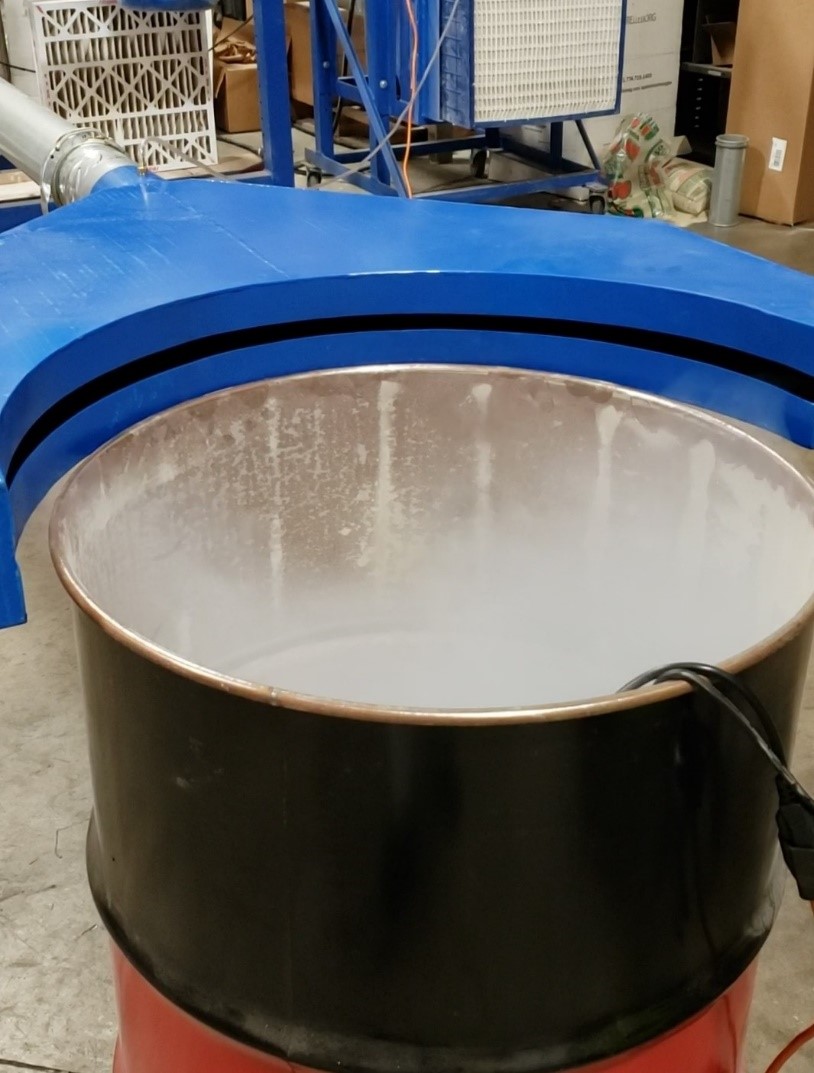Dust collection systems pick up dust generated by process equipment and move it away for disposal or to be recycled. They use hoods to gather the air around the dust generation equipment. The dusty air is then sent to the dust collection equipment through ductwork. The dust collection equipment often consists of a pre-filter to help collect the dust followed by the main dust collector. An exhaust fan is often at the end and it powers the system by pulling the air through each of these components.
Well-Designed Hoods
The first stage of the dust collection system are the collection hoods. Well-designed hoods are engineered so the dust generated by the equipment can be collected with the least amount of airflow possible. The amount of airflow required by a hood is dependent on a variety of factors including, how the dust is generated, distance of the hood to the equipment, and the size and shape of the hood. How the dust is being generated and the distance of the hood from the equipment both affect the minimum velocity the air needs in the hood. While the size and shape of the hood affects the total airflow that hood requires for proper dust collection (velocity x area= airflow).
A properly designed dust collection system will have enough velocity in the hood to collect the dust being generated. The exhaust fan will have enough static pressure to keep this velocity after all the pressure drops in the system (ductwork, pre-filter and dust collector). Now, if for some reason the airflow is not at the design velocity at the hood, then the dust collection from the process will be affected.
When The Airflow Is Too High
If there is too high of an airflow in the system, the airflow through the hood will also be too high. This means that the velocity through the hood is also higher than designed. The greater airflow (velocity) will mean the hood will have greater suction around the equipment. While the hood will pick up the nuisance dust that you want collected, it could also collect material that you want to stay on a conveyor, table, etc. This will cause higher dust loading in the system. It will also mean that the dust collector is collecting valuable material that should be used in the process or is product. This will increase the waste of the system, thereby increasing costs. The greater dust loading in the system will also cause more maintenance in the ductwork and dust collector.
When The Airflow Is Too Low
If there is too low of an airflow in the system, then the airflow through the hood will also be too low. This means that the velocity through the hood is lower. This will allow dust that is being generated by the process equipment to escape the dust collection system by not being collected in the first place. The dust that escapes the dust collection system will settle on the surrounding equipment. This will cause increased housekeeping in the plant to prevent dust buildup. Dust buildup could become a fire and explosion hazard and/or cause increased maintenance on plant equipment.
Monitoring the airflow in the dust collection system will allow you to make sure the airflow at the pickup hoods is correct which will prevent dust from escaping from the system which would cause additional issues or too much material being collected which would cause loss of profits.
To improve efficiency and safety, there is no substitute for an on-site inspection by an experienced expert. Click below to start with a free 20-minute phone consultation by clicking the button.


